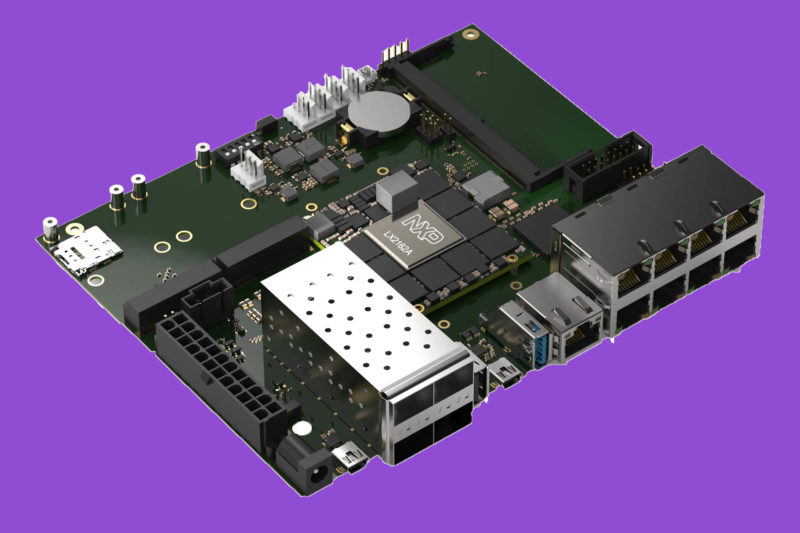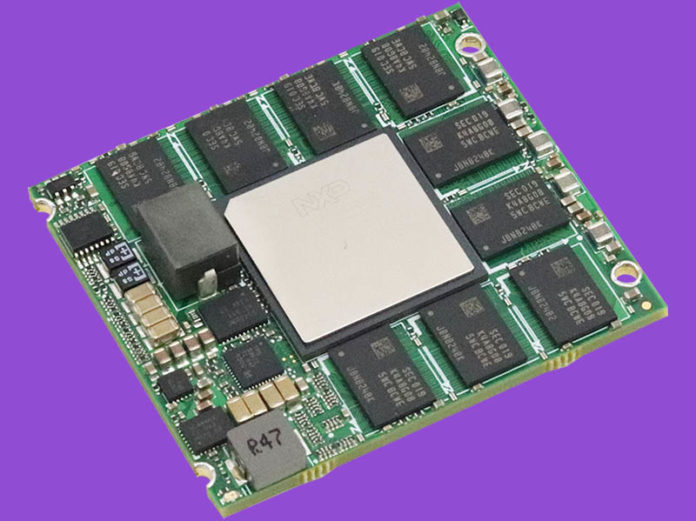SolidRun has a new NXP Layerscape COM module that scales to 16 cores and 32GB of memory. The new SolidRun LX2-Lite is designed to be a compact way to deliver NXP Layerscape Arm solutions while the CLEARFOG LX2-Lite board is designed to expose I/O like 25GbE to the platforms in a developer board.
SolidRun LX2-Lite and CLEARFOG LX2-Lite NXP Layerscape Solutions Launched
The new SolidRun LX2-Lite is a 48mm x 52mm board that is smaller than COM Express 7. These new SolidRun LX2-Lite SOMs have 32GB of DDR4, 8GB of eMMC, and come in three primary processor options:
- 16 Core NXP LX2162A
- 12 Core NXP LX2122A
- 8 core NXP LX2082A
Aside from the differing amounts of Arm A72 cores, there are also eight PCIe Gen3 lanes, networking that on the CLEARFOG LX2-Lite development board is 2x 25GbE SFP28 and 2x 10GbE SFP+. One also gets USB 3, some of the debugging ports, fan headers, and 8x RJ45 1GbE ports.

The NXP processors are based on 16nm and have onboard accelerators. These include a 50Gbps security acceleration engine and an 88Gbps data compression engine.
Final Words
While for AI workloads, one will probably have seen that we are already testing the NVIDIA Jetson AGX Orin, for networking on Arm, we need more options. By using a modular approach, SolidRun hopes to offer an easy way to integrate into carrier boards and expand the market. We also wish that there was something a bit more ready to deploy. Having just the CLEARFOG LX2-Lite carrier board is great, but there is a big difference between that and a shippable product. On the other hand, we have inexpensive systems like we saw in our 4x 2.5GbE Fanless Router Firewall Box Review that come in a passively cooled chassis, with software that is either pre-installed or easy to install. The SolidRun platform is in a different class, but at some point, we hope they transition to a more deployable solution rather than having development boards.





What niche do these things fill? ARM SBCs have their uses to be sure, but ARM SBCs with dual 25GbE and and dual 10GbE? Under what workloads can a even16 core ARM chip even begin to fill such pipes? Are they to be used as network security appliances?
@D.Thomas
ARM cores are plenty powerful to pump data over those links. This is probably not a device that actually reads or writes the data itself, but rather processes the data as a stream coming in and going out.
Essentially, the same thing a switch or most routers do.
It is likely that a device like that could be used the same way older PowerPC and x86 based systems are used to power network appliances with similar interfaces.
The NXP processors are based on 16nm and have onboard accelerators. These include a 50Gbps security acceleration engine and an 88Gbps data compression engine.
What type of acceleration will determine the usecases for these boards.
IPS ? Crypto -> IPSec/VPN ?
Finally! A Raspberry Pi with enough NICs. :)
Woah. 8|
That is like the home router I’ve been wanting. Or it will be when BSD support arrives.
Now if it could grow a few ports for disks (5?), it would be a perfect little home server.